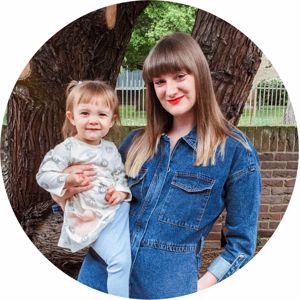There comes a time in every parents’ life that what you say becomes very clear. This is usually around 18 months when your little ones start repeating your own words back to you, and you suddenly have to stop and think. The one thing I kept hearing Alice repeat was ‘no’, which I obviously started using a lot. So it got me thinking, what can parents do to help with this? Of course, there are times where the word no is used for a very good reason- to alleviate a potential hazard or danger, but changing the way of communicating with your toddler is definitely proving (in our case) to be relatively simple.
I studied child language acquisition in great depth at sixth form and went on to continue language studies at university so I am constantly aware of what I say around Alice and how she will interpret it. It’s been such a learning experience for me as a linguist to have my own living, breathing source to help me understand English even better than before.
If I walk into the room and I see her with something in her mouth that she’s not supposed to be chewing on, I say ‘we don’t put that in our mouth’ instead of just ‘no, take it out’. This has worked really well as she understands from this what I want her to do. Essentially, it’s speaking indirectly about something in a way she will get the ‘no’ message. Then there are other times where I have left my laptop out and Alice is about to grab it and delete my work, so I just have to say ‘no’ to get her attention quickly! Other examples where it’s easy to replace ‘no’ is by asking a question. This will immediately turn their heads when they hear that intonation in your voice change, so say something like- what are you doing over there? Are you about to touch that? This will help to get their brains working and essentially help to get them to change their mind without you having to say the N-word.
Another trade word for ‘no’ is your child’s name. Although this can have the same effect as no, and if you say it too many times then toddlers will eventually stop reacting to their name in the same way as no. If you find yourself repeating your child’s name over and over again, it’s not going to be good for you either hearing it in a negative context all the time. In this case, you can use the question method again, or find another noise like singing their favourite song. Once you have their attention, then address the issue of why you wanted to tell them no, keeping the whole situation positive.
I’m sure there are many more ways you can introduce this into your own household to stop saying no every 5 minutes, just get creative with it. The main goal is for your toddler/child to understand the importance of the word no, and to value it when you say it, because guess what, you really mean it!







